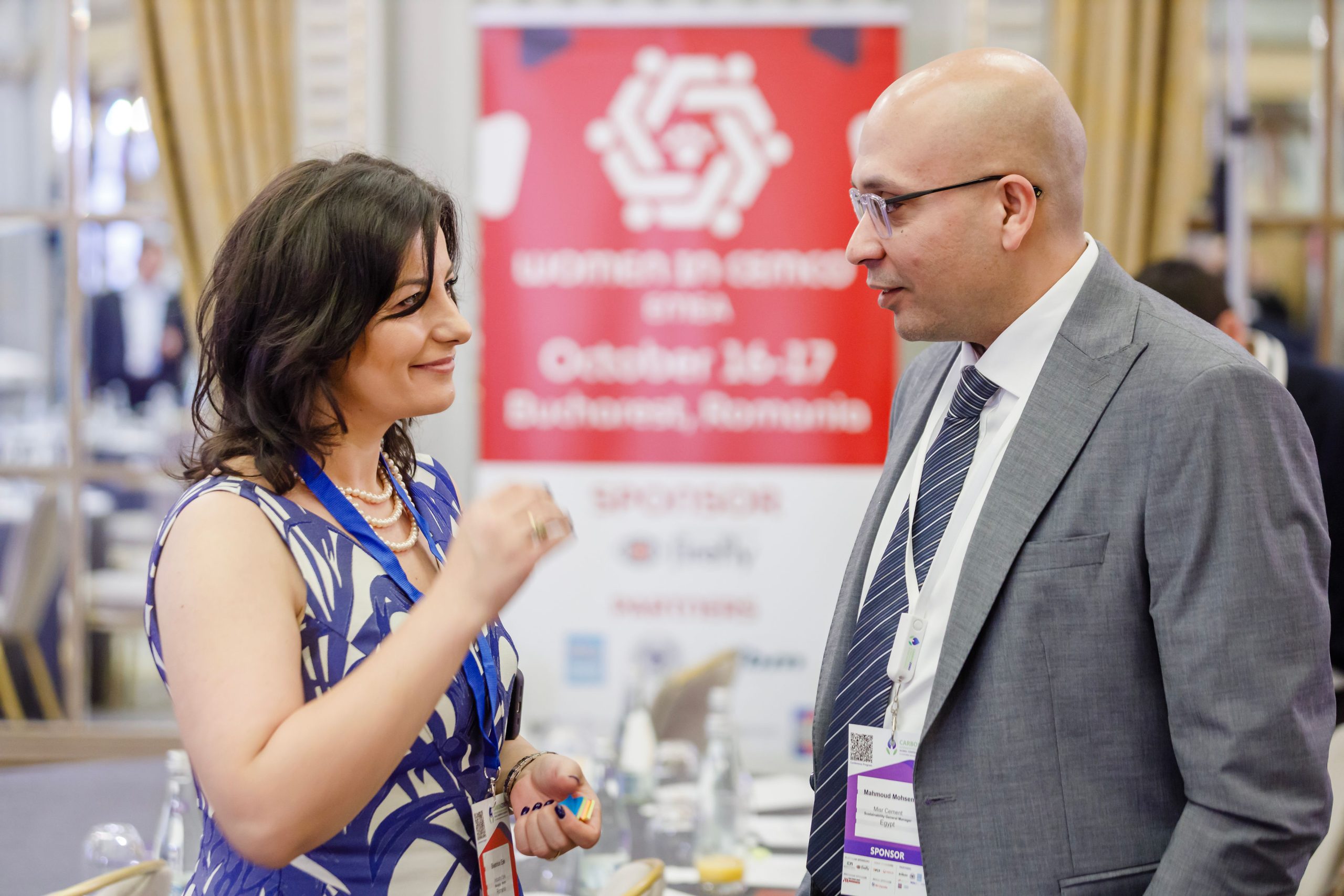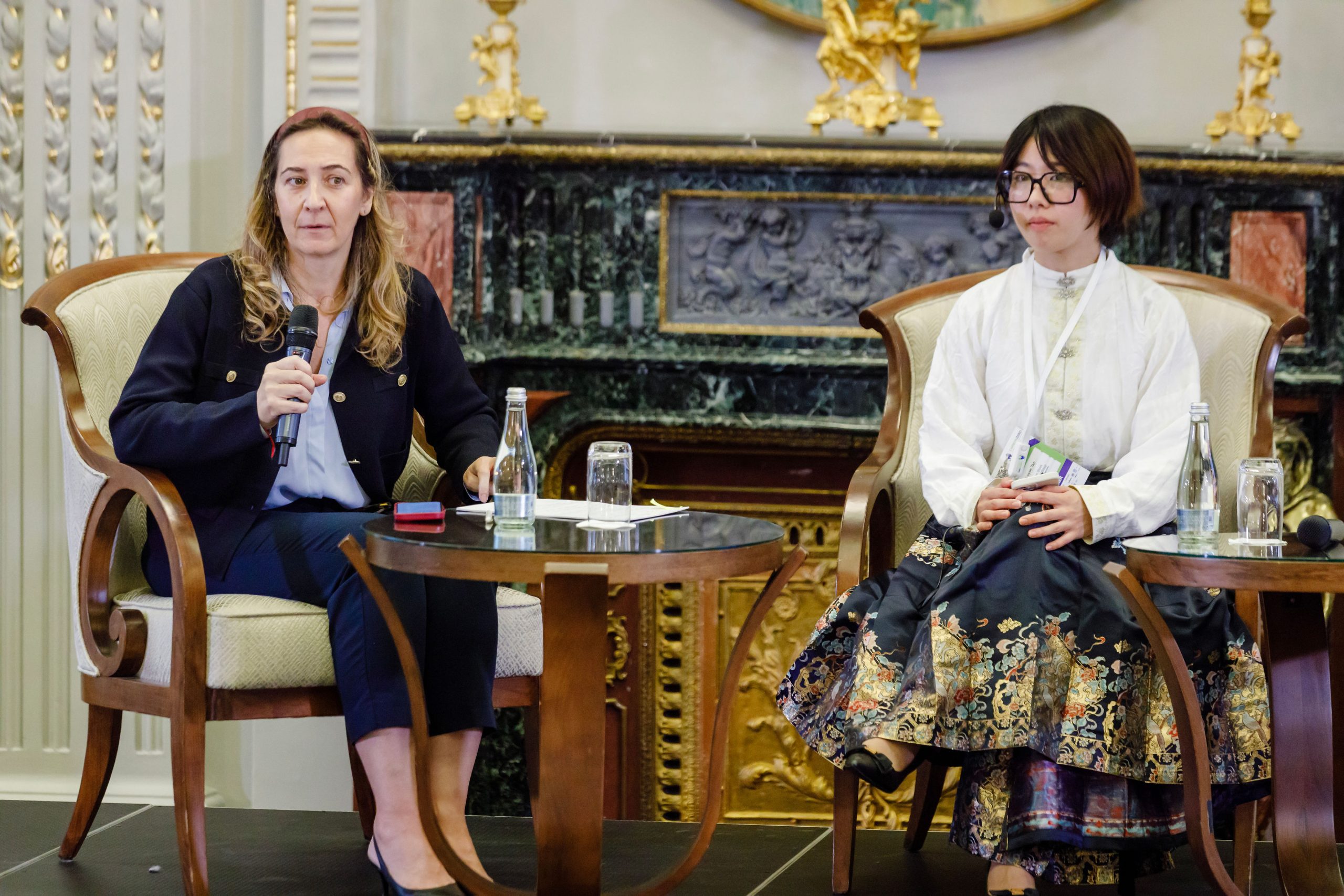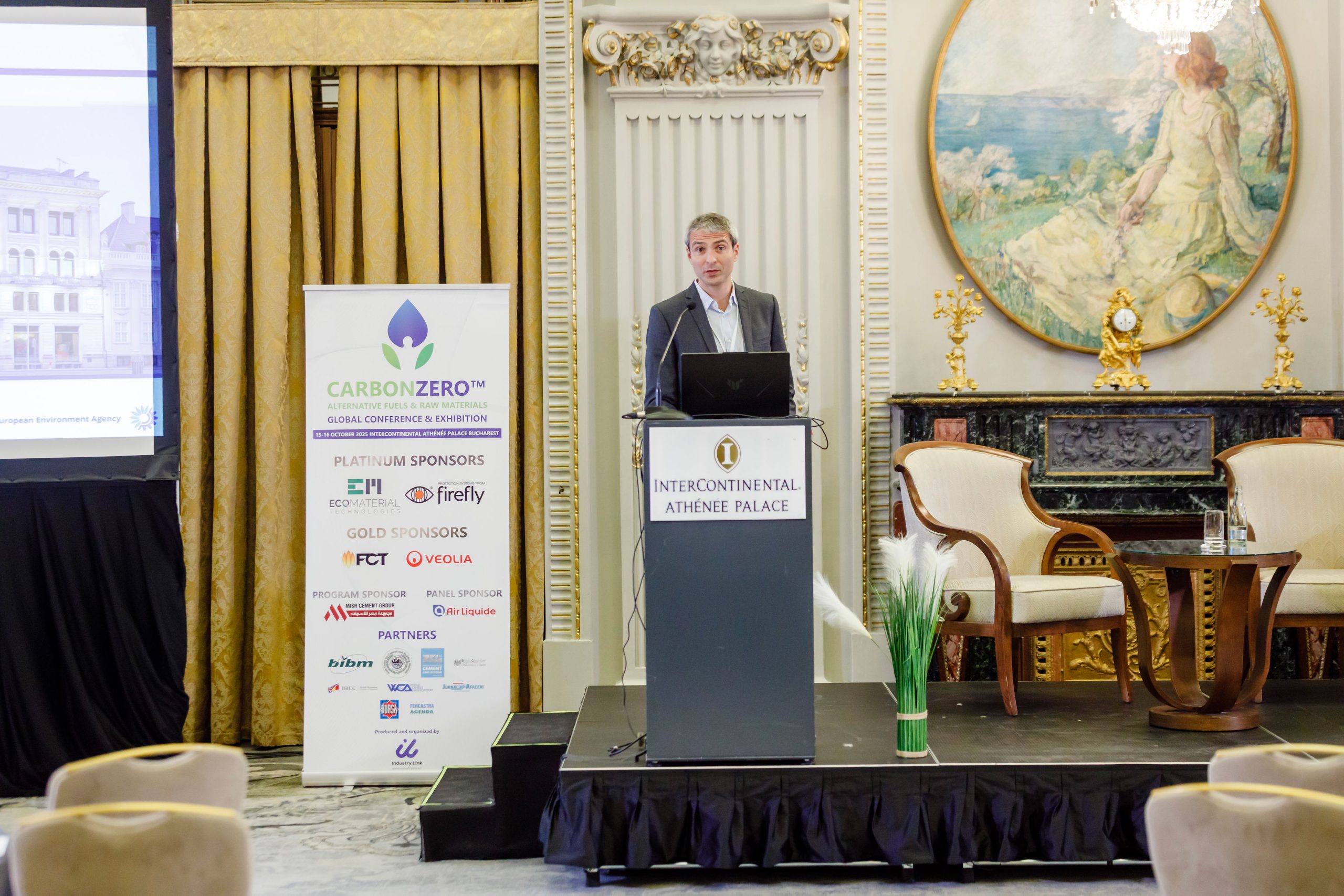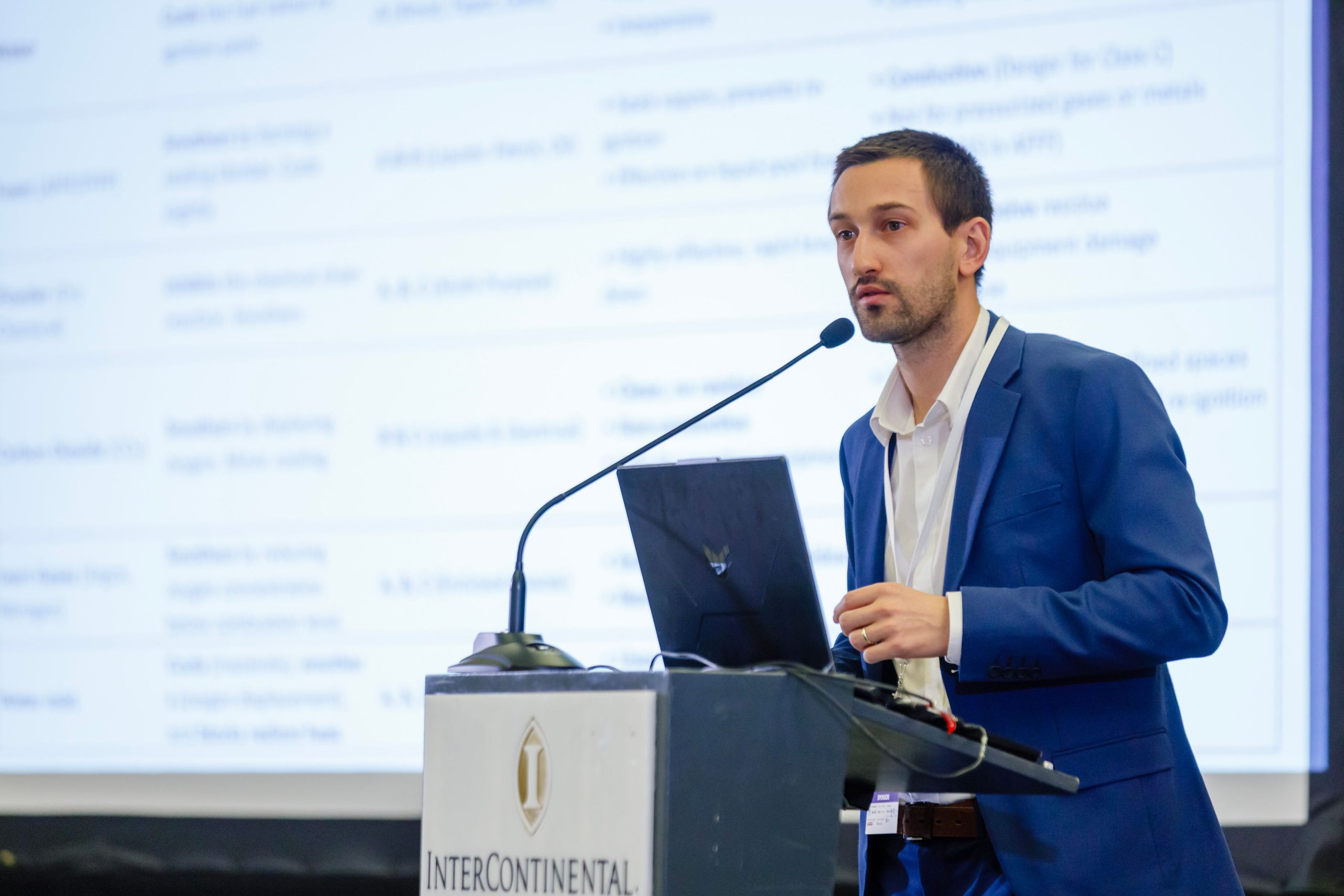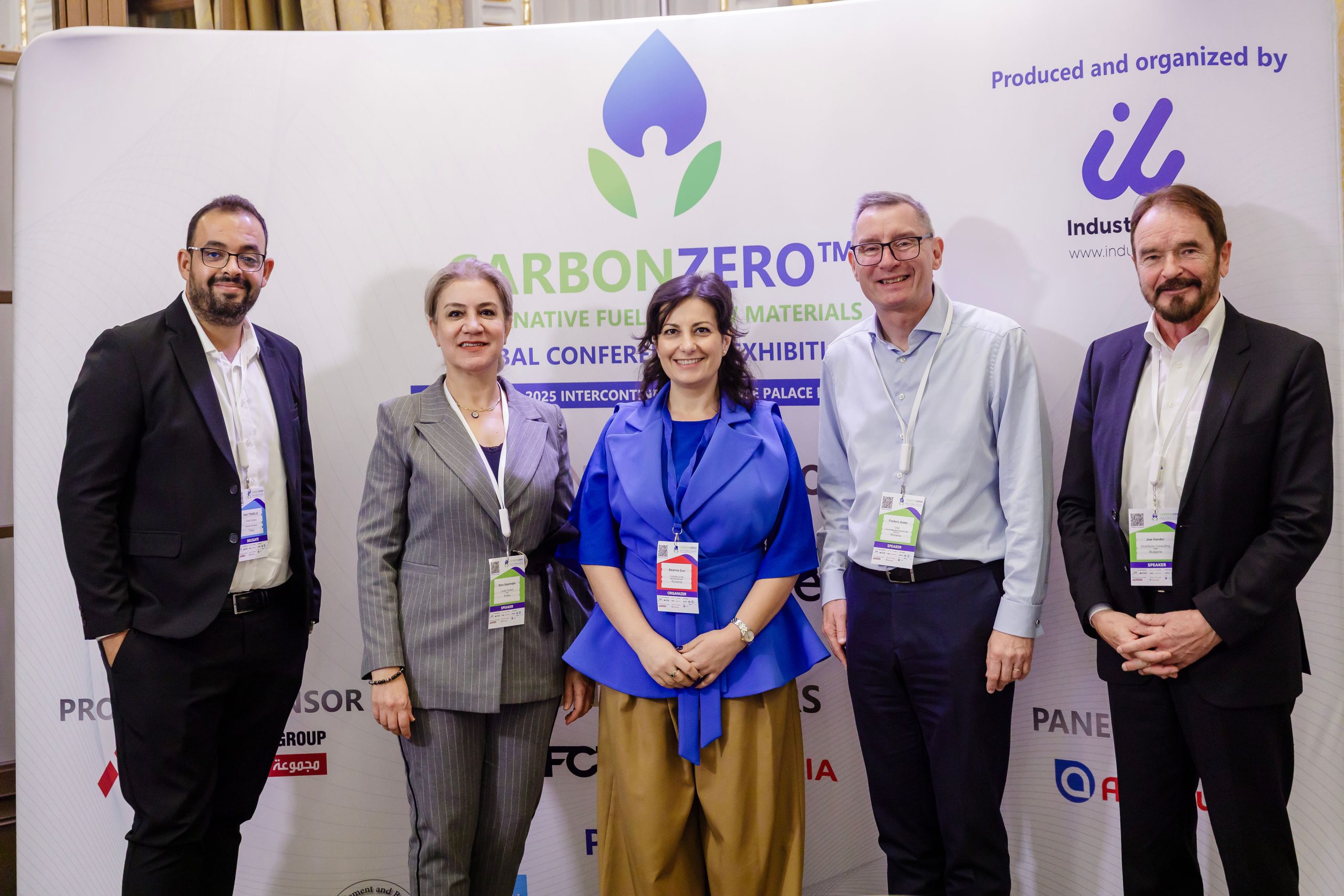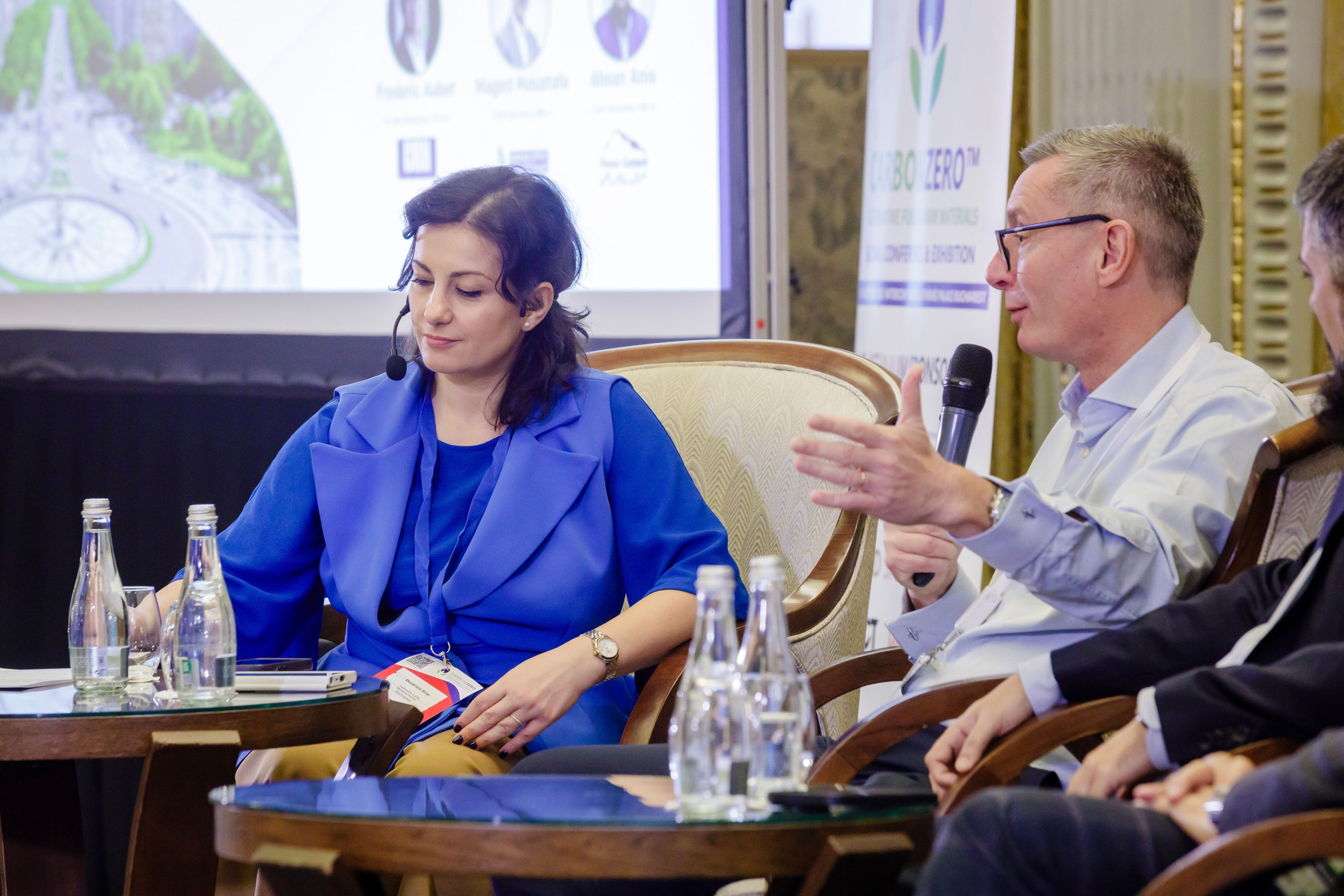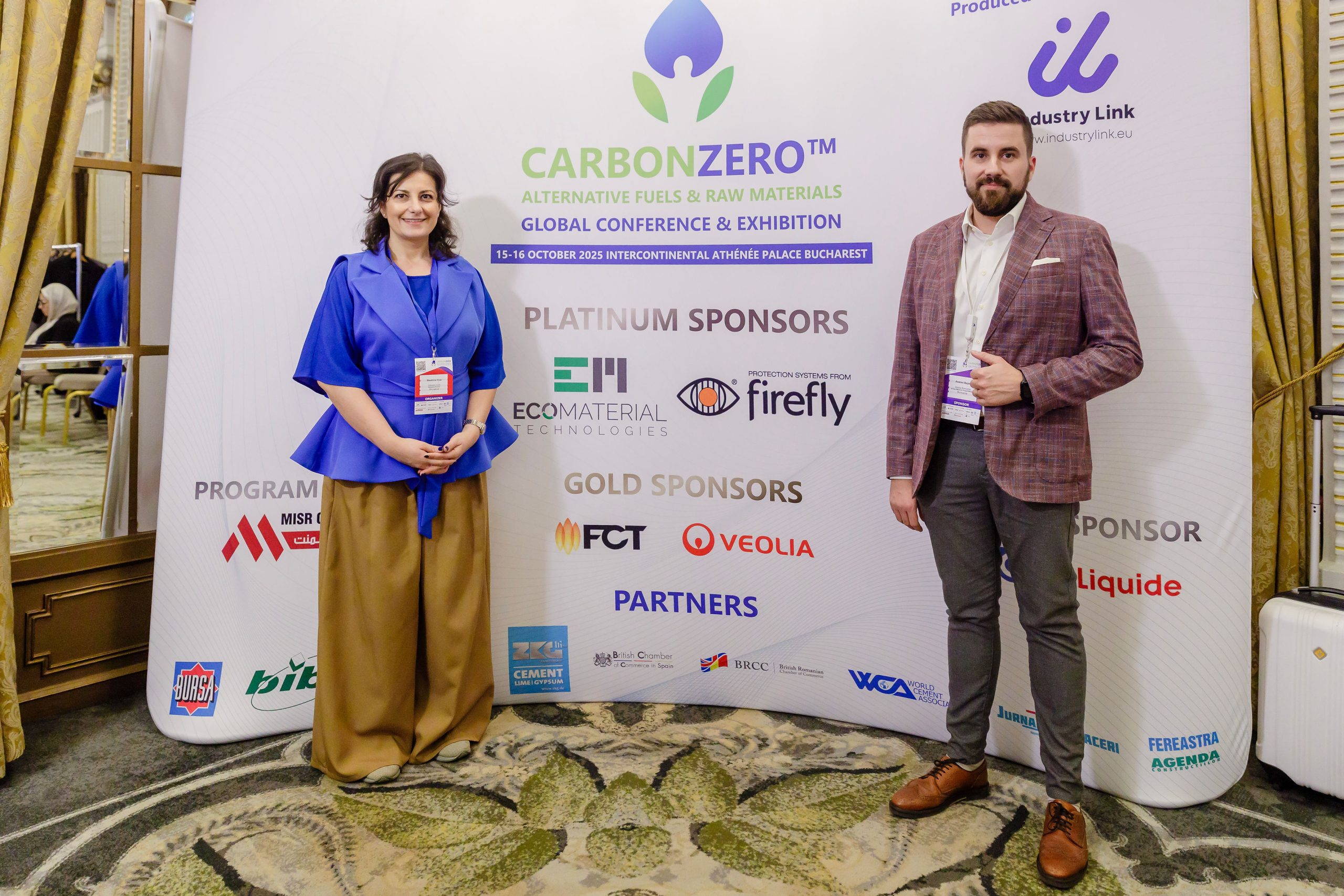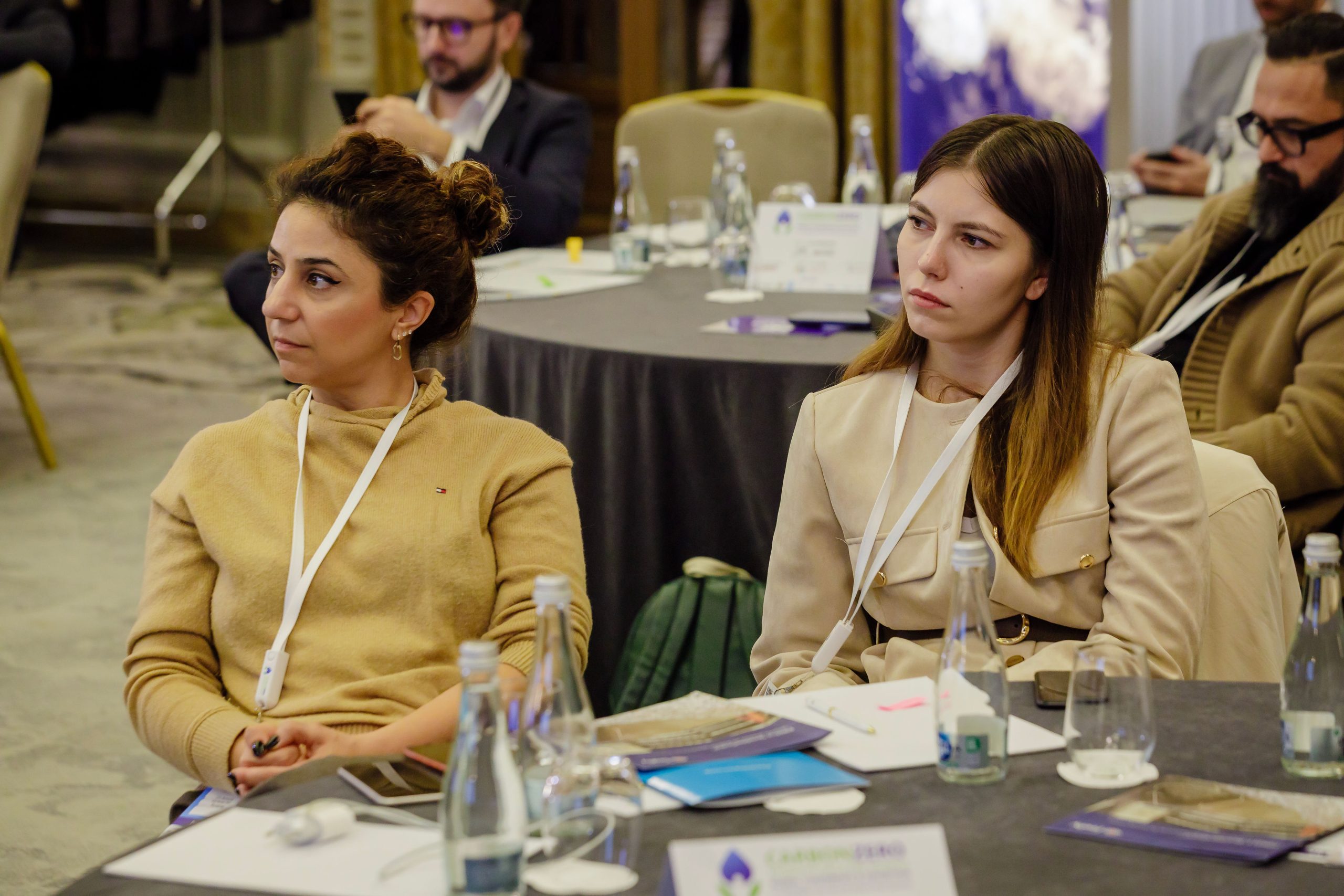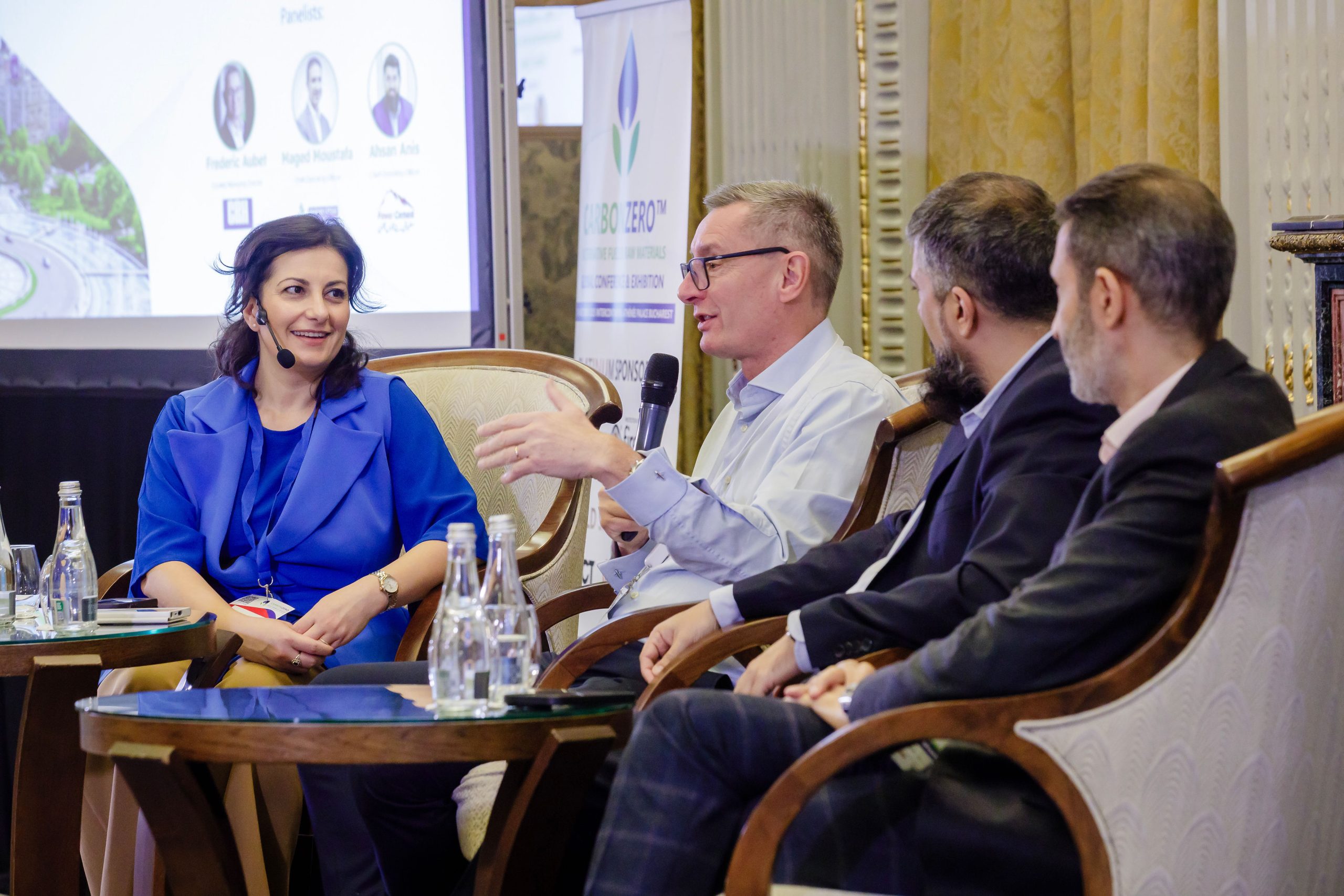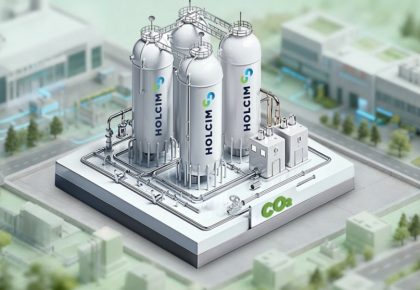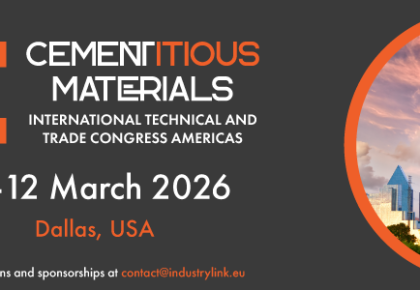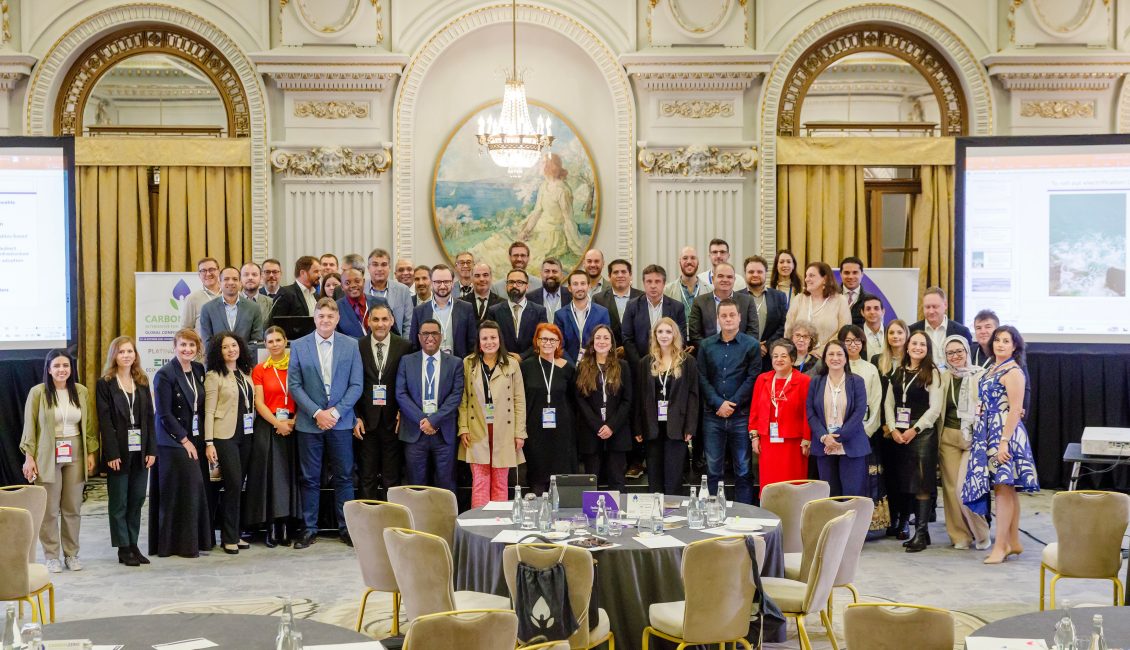
The fourth edition of CarbonZero: Alternative Fuels and Raw Materials Global Conference and Exhibition took place on 15–16 October 2025 at the InterContinental Athénée Palace Hotel in Bucharest, Romania. Following acclaimed editions in Lisbon, Lyon, and Madrid, this year’s conference cemented CarbonZero’s position as one of the leading global platforms accelerating the transition to Net Zero in the cement and construction sectors.
Feedback from leaders of the construction industry acclaimed it as “Absolutely splendid and the best event I attended throughout my career” and “A future-happens-now type of event where I met new contacts that are essential for my business that I never got the chance of ever meeting before”.
Organised by Industry Link, CarbonZero 2025 convened a diverse group of cement producers, technology providers, policymakers, financiers, and sustainability experts from over 30 countries in Europe, Africa, the Middle East, North and South America. The tone was pragmatic and solution-oriented: the industry has a robust decarbonisation toolkit — now the focus is on execution, scalability, and economic feasibility.
In addition to high-level presentations and panels, the event provided multiple networking opportunities — including dedicated small groups for interaction, aside the usual coffee breaks, lunch sessions, plus an exclusive VIP dinner — allowing participants to engage in focused dialogue and partnership building across the value chain.
Building the Foundations for Industry Transformation
The conference opened with welcoming remarks from Beatrice Ene, Managing Director and Head of Events at Industry Link, setting the tone for two days of innovation, collaboration, and tangible solutions.
Matej Kvapil (Firefly AB) underscored the importance of process safety in his presentation, “How to Avoid Large and Costly CO₂ Emissions Caused by Fires.” He illustrated how early detection and prevention technologies can avert disruptions and eliminate unplanned CO₂ spikes in cement plants.
Marco Sirotti (Bellona Europe) presented “NetZero Pathways for European Cement,” outlining regionalised strategies that combine supplementary cementitious materials (SCMs), alternative binders, and carbon capture. He emphasized that successful decarbonisation depends on local raw materials, infrastructure, and regulatory readiness — reinforcing that there is no single universal pathway to Net Zero.
A policy-focused opening panel, “CBAM and the EU ETS,” moderated by Marta Díez (CFP Energy) and featuring Nicolas Endress (Climease) and Luyue Tan (LSEG), examined evolving carbon pricing mechanisms. The consensus: predictable policy frameworks and stable carbon markets remain essential to unlock long-term investment in low-carbon technologies.
Innovation, Materials, and Circular Opportunities
As the discussions evolved, the focus shifted to material efficiency and waste valorisation — key pillars of circularity in cement production.
Paulo Mazzei (FCT Combustion) demonstrated in “Color Optimization and Performance Enhancement in Calcined Clays” how advanced process control improves product performance while enhancing the scalability of low-carbon clinker substitutes.
Patrick Kahasha (PPC DR Congo) shared a case study on “Waste Management: Alternative Fuels and Raw Materials Opportunities for Cement & Construction Industries in D.R. Congo,” highlighting how circular models convert environmental challenges into economic opportunities.
Mihai Tomescu (European Environment Agency) concluded the session with “Competitive Energy for EU Industry,” linking renewable integration and energy flexibility to industrial resilience in a decarbonising Europe.
The clear takeaway: circularity and energy efficiency are now both economic imperatives and regulatory requirements — not optional sustainability initiatives.
Technology, Digitalisation, and Carbon Capture
The afternoon sessions delved into technological transformation, focusing on the convergence of AI, digitalisation, and carbon capture.
A high-level panel, “Innovating Towards Net-Zero Cement – Technologies and Material Breakthroughs,” moderated by Aaron Neuville (EY GmbH & Co.), brought together Marcin Skowron (Air Liquide NCE Cluster), Andreea Ionita (CRH), and Marco Sirotti (Bellona Europa). The discussion highlighted the synergistic potential of combining novel material chemistries, AI for process optimization, and advanced CCUS to drive deep decarbonization.
Bergur Rasmussen (CCS Europe) presented “Bridging the Gap: Accelerating Carbon Capture Deployment for Net-Zero,” emphasizing the role of shared infrastructure and industrial clusters as catalysts for scaling CCS cost-effectively.
On the operational side, Mahmoud Mohsen (Misr Cement Group, Egypt) showcased “AI-Driven Fuel Quality Optimization for Cement Kilns,” demonstrating tangible CO₂ intensity reductions through machine learning integration.
Vlad Stoicescu (Romanian Association for Sustainable Fuels) discussed “Renewables as the Cornerstone of Sustainable Economic Models,” comparing policy developments in Europe and China, while Sabina Strîmbovschi (Energy Policy Group) provided a strong overview of Romania’s decarbonisation progress.
The collective message: technology must align with policy and investment frameworks to translate innovation into measurable CO₂ reductions.
Executive Insights and Industry Leadership
Day Two opened with a keynote from Grant Quasha (Eco Material Technologies). His session, “Eco Material Becomes a CRH Company – Driving Cement to Cementitious,” demonstrated how strategic acquisition accelerates market adoption by scaling the distribution of essential low-carbon cementitious materials across CRH’s network.
Ebru Sipahioğlu (Limak Cement) shared Limak’s decarbonisation roadmap in “From Research to Reality,” detailing how process efficiency and technology integration are driving measurable progress. Ebru brought to the scene a few of the essential works that Limak is developing which generated huge interest from the audience in the Q&A session.
Andrei Bejan (Veolia Romania) presented ‘Complete Energy Efficiency Solutions for Buildings,’ highlighting Veolia’s GeoExchange system for energy optimisation and reduced fossil fuel use.
A C-suite panel, moderated by Beatrice Bildea-Ene and featuring Frederic Aubet (CRH Romania), Maged Moustafa (Arabian Cement Company), and Ahsan Anis (Power Cement Limited), explored “Decarbonising the Cement Value Chain.” Leaders highlighted the importance of aligning corporate strategy with regulatory and market demands, integrating sustainability into governance, and prioritising capital allocation for low-carbon initiatives.
Adding a North American perspective, Tien Peng (GreenPlum Street LLC) presented “Setting Limits on Concrete’s Carbon Footprint,” showing how regulatory clarity can drive innovation and accountability across the value chain.
Procurement, Finance, and Future Pathways
The closing sessions turned to finance and procurement, acknowledging that achieving Net Zero is fundamentally a capital allocation and governance challenge.
Mohammed Fouad (Riyad Cement) discussed “How Human-Machine Collaboration Enhances Efficiency While Reducing Emissions,” showcasing automation’s potential for emission reduction.
Vlad Gradinariu (Green Apples) argued in “How Sustainable Procurement Successfully Influences Scope 3 Targets” that supplier engagement and transparent value-chain collaboration are key to addressing indirect emissions.

Gabriela Constantin (Climate Bonds Initiative) presented “Transition Finance and the Role of Science-Based Criteria,” underscoring that credible, data-backed transition plans are now prerequisites for climate-aligned investment.
Dr. Joe Harder (OneStone Consulting Ltd) followed with “The Future of the CCUS Market in the Cement Industry,” before moderating the final panel “Navigating the Path to Carbon Neutrality: Policy, Standards, and Market Dynamics.”
Panelists Kim Schoppink (SBTi), Josilene Ticianelli Vannuzini Ferrer (PROCAM/USP), Roxana Suciu (KPMG Romania), and Mihai Tomescu (European Environmental Agency) emphasized harmonised standards, transparent reporting, and global cooperation as essential enablers to convert research progress into industrial-scale results.
From Dialogue to Delivery: The Way Forward
Across all sessions, the message was consistent: the cement industry has moved beyond pledges. The challenge is execution at scale.
Five shared priorities emerged:
- Scale proven technologies — from AI optimisation to calcined clays and carbon capture.
- Adopt unified standards for measuring, verifying, and reporting CO₂ reductions.
- Invest in circular models that turn waste streams into valuable inputs.
- Engage policymakers and financiers to build stable, long-term frameworks.
- Collaborate regionally through industrial clusters to de-risk investment and accelerate deployment.
In her closing remarks, Beatrice Ene captured the spirit of the event: “CarbonZero is more than a conference — it’s a platform for cooperation and for right-now solutions. Real change happens when knowledge becomes a joint action.”
Looking Ahead — CarbonZero 2026
CarbonZero 2025 confirmed that the cement sector has entered a new phase: from ambition to implementation. With technologies maturing, regulatory frameworks evolving, and partnerships strengthening, the industry is now poised to translate pilot successes into scalable, measurable decarbonisation outcomes.
The upcoming CarbonZero 2026 will further this mission — showcasing how cross-sector collaboration, data transparency, and capital mobilisation can drive portfolio-wide transformation across global cement networks. Write to us for nominating relevant speakers and topics at contact@industrylink.eu.



